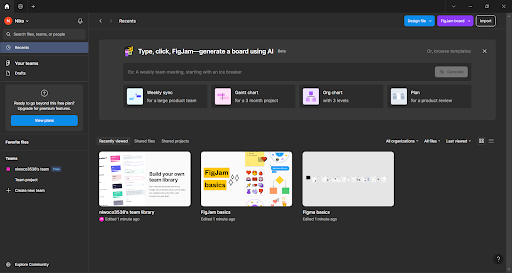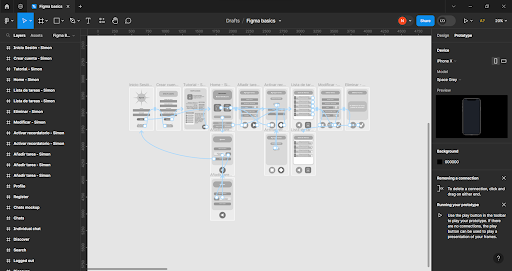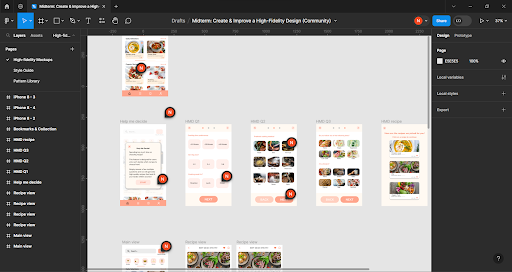The field of digital design has undergone a remarkable transformation in recent years thanks to the innovative vector graphics editor Figma. This tool, designed for website creation, prototyping and other visual projects, has gained increasing popularity within the UX/UI design community, communication agencies, and companies around the world. But what is Figma and how does it work? Below, we provide a guide for those who are new to the program or have only heard of it.
What is Figma?
Figma is a graphic editing and interface design platform based in the browser, meaning you don’t need to download any application to use it—you only need to register and you can start designing. However, if you want to install the application, you can also download it from Figma’s website; it is compatible with both macOS and Windows.
With it, you can do a little bit of everything in terms of design, from designing and prototyping websites and app interfaces to creating social media posts and even presentations. For this reason, it is one of the most valued tools among design agencies and companies.
One of its most innovative features is its collaborative nature. Multiple team members can work on the same file simultaneously and in real time. This means that designers can begin creating a design while developers and copywriters are already involved in the early stages of the project.
The result? Significant time savings and enhanced creativity. Figma’s online nature allows you to save all progress to the cloud in real time, eliminating issues such as working with outdated files or sharing large, heavy documents. It also offers a version history, so you can always return to an earlier point in the design—whether to review something or restore something deleted by mistake. It is important to note that it is almost always used online and requires a stable internet connection.
How does Figma work?
Now that you have a better understanding of what Figma is and its capabilities, let’s explore how it works, especially its basic and innovative elements.
Before diving into how it works, it’s important to highlight that it is not only effective in the final stage of graphic design but also valuable in all previous stages.
Figma can be effectively used for:
– Brainstorming and idea generation.
– Creation of design systems and icon libraries.
– Evaluation of different graphic options.
– Adapting interface designs to different devices (computer, mobile, tablet, smartwatch, etc.)
– Creating prototypes.
– Implementing and tracking the feedback received.
Collaboration is a fundamental part of Figma, as it allows several team members to work together on the design and review of the project. This is especially useful for gathering early feedback and ensuring that all design aspects are in place. Additionally, Figma has a space called “Figma Community,” where any Figma user can share a file or plugin with others. You simply search for what you need and copy it to your user profile.
Basic elements of Figma and how they work
Creating an account:
To start using Figma, simply register for free at figma.com. Once registered, you can create teams, projects, and files. You can also invite other team members so they can access the projects you will work on together.

Workspace:
The workspace is large, allowing you to create extensive designs. Within this space, you can add screens and graphic elements related to your design. You can set up screens using the frame tool, which offers various preset sizes to suit different devices and needs.

Libraries and community:
Figma offers component libraries that let you speed up your design process by using predefined graphic elements, such as common icons and buttons. You can also explore the community to find inspiration, resources, and design systems that help you maintain consistency throughout your project.

Prototyping:
Figma includes a prototyping section that allows you to link screens and graphic elements to simulate user interaction with your design. You can create connections between elements and simulate how navigation will work on your website or application. This is useful for testing and improving usability in the early stages of the project.

Feedback collection:
Once you share your Figma file with your team, you can receive feedback through colored notes and written comments. These notes are used to vote, report issues, and provide recommendations. The voice transcription feature also allows you to communicate feedback verbally.

From creating designs to real-time collaboration and feedback collection, Figma has become a popular choice in the world of digital design. If you’re looking to dive deeper into Figma and become an expert, there are courses and resources available to help you make the most of this platform.



